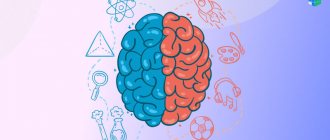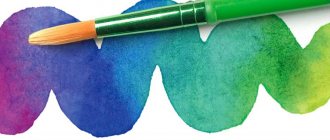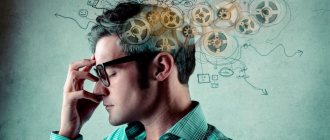People often talk about the abilities of a person, implying his inclination towards a certain type of activity. At the same time, few people think that this concept is scientific and implies the level of development of this quality, as well as the possibility of its improvement. Not everyone knows what levels of development of abilities exist, how to work to improve them and learn to make the most of them. Meanwhile, it is not enough to have any ability; this quality must be constantly developed if you want to truly achieve success in a certain area.
What are abilities, level of development of abilities
According to the scientific definition, ability is an individual and psychological characteristic of a particular person that determines his ability to carry out a specific activity. Innate prerequisites for the emergence of certain abilities are inclinations that, unlike the first ones, are laid in the individual from birth. It should be taken into account that abilities are a dynamic concept, which means their constant formation, development and manifestation in various fields of activity. Levels of ability development depend on many factors that must be taken into account for continuous self-improvement.
According to Rubinstein, their development occurs in a spiral, which means the need to realize the opportunities provided by one level of abilities in order for a further transition to a higher one to occur.
The concept of character, its structure and formation. Typology of character
Character is a certain style of a person’s views and behavior, which is formed and strengthened under the influence of life influences and upbringing.
Character is a significant feature of the human psyche, the totality of a person’s relationships with the world, with other people, with himself.
A person’s character expresses a certain stock of needs and interests, aspirations and goals, feelings and will, manifested in the isolation of his reality and behavior, views and manners. Character is characterized by the following basic qualities: moral education, completeness, integrity, confidence, strength, poise. Moral education characterizes a person both in his attitudes and behavior and is the leading and most socially valuable quality of character. Completeness characterizes the diversity of needs and interests, activities and hobbies, and the diversity of human activity. Some people are distinguished by their versatility, others by their narrowness, one-sidedness and limited development. Integrity is characterized by the internal unity of a person’s spiritual camp, the consistency of his relationships with various aspects of reality, the absence of contradictions in aspirations and interests, and the unity of speech and action. Determination characterizes the firmness and steadfastness of behavior, which always corresponds to the prevailing beliefs, moral and political ideas and concepts, the developed basic orientation that gives meaning to human life and activity. Strength characterizes the energy with which a person pursues his goals, the ability to passionately achieve and develop enormous strength to confront and overcome difficulties and obstacles. Balance characterizes the optimal or favorable ratio of restraint and activity for activity and communication with people.
These basic characteristics have a complex, sometimes contradictory relationship.
Completeness, integrity, confidence and strength of character are determined by life influences and upbringing.
Character is formed as a result of a person’s constant interaction with the people around him, in the process of understanding the emerging circumstances of life and upbringing. The range of impressions and diversity of people's activities depend on the completeness and strength of their character.
A person’s character receives its content depending on the goals that set the direction of his activities.
Orientation is a characteristic of a particular person, a selective attitude towards the reality he experiences, which affects his activities.
The basis of orientation is worldview as a set of views on nature and society. A worldview becomes a belief because it becomes a person’s internal property and has a profound influence on his actions.
Worldview as such is not a subject of study in psychology; psychologists study how a worldview, which becomes a person’s belief, permeates his consciousness and activity.
A person’s self-determination, the goals he sets for himself, the means he prefers in the struggle to achieve his goals are closely related to his worldview as the content of his orientation.
People with the same worldview have significant individual differences in character.
In a word, the worldview that makes up the content of a person’s orientation is the basis of character.
Character traits are a structural unit.
Character traits are complex individual traits that are sufficiently inherent in a person and allow, with a certain probability, to predict his behavior in a particular case.
Types of abilities
The level of development of individual abilities is divided into two types:
- reproductive, when a person demonstrates the ability to successfully master various skills, assimilate and apply knowledge, as well as implement activities according to an already proposed model or idea;
- creative, when a person has the ability to create something new and original.
In the course of successful acquisition of knowledge and skills, a person moves from one level of development to another.
In addition, abilities are also divided into general and special, according to Teplov’s theory. General ones include those that are demonstrated in any field of activity, while special ones are manifested in a specific area.
Giftedness is the second level of ability development
Giftedness implies a combination of various abilities that are developed at a sufficiently high level and provide an individual with the opportunity to successfully master any type of activity. In this case, the possibility of mastery is specifically implied, since a person, among other things, is required to directly master the necessary skills and abilities for the successful implementation of an idea.
Giftedness can be of the following types:
- artistic, implying great achievements in artistic activity;
- general - intellectual or academic, when the levels of development of a person’s abilities are manifested in good results in learning, mastering various knowledge in various scientific fields;
- creative, which involves the ability to generate new ideas and demonstrate a penchant for invention;
- social, providing high social intelligence, identification of leadership qualities, as well as the ability to build constructive relationships with people and possession of organizational skills;
- practical, manifested in the individual’s ability to use his own intelligence to achieve his goals, knowledge of a person’s strengths and weaknesses and the ability to use this knowledge.
In addition, there are types of giftedness in various narrow areas, for example, mathematical giftedness, literary giftedness, etc.
Classification
There are a large number of abilities that differ from each other according to different criteria:
- by origin: natural and social. The former are congenital or biological, the latter were acquired through the process of learning and socialization (what is it?);
- by focus: general and special - having a wide scope of application or needed only for a specific type of activity or action, respectively;
- according to the degree of development they distinguish: giftedness, talent, genius - from simple to complex;
- according to development conditions: potential and actual. The first are those abilities that can develop under certain conditions. The second are available to the individual at the moment.
Special Abilities
These are opportunities for the development of individual mental processes and qualities of activity.
General Abilities
These are favorable opportunities for the development of human mental characteristics, which are equally important for many types of activities. Such general abilities are the ability to develop resourcefulness and intelligence in a person.
The totality of general special abilities characteristic of a particular person constitutes giftedness.
Talent – a high level of development of creative abilities
If a person who has pronounced abilities in a certain field of activity constantly improves them, they say that he has a talent for it. It is worth considering that this quality is also not innate, despite the fact that many are accustomed to thinking so. When we talk about the levels of development of creative abilities, talent is a fairly high indicator of a person’s ability to engage in a certain field of activity. However, we should not forget that these are nothing more than pronounced abilities that must be constantly developed, striving for self-improvement. No natural inclinations will lead to recognition of talent without hard work on oneself. In this case, talent is formed from a certain combination of abilities.
Not a single, even the highest level of development of the ability to do something can be called talent, since to achieve a result it is necessary to have such factors as a flexible mind, strong will, great ability to work and rich imagination.
How to find them in yourself
Some people, being at a fairly mature age, say that they do not have any abilities or even the makings of them. This is fundamentally wrong, since everyone has them , it’s just that not everyone realizes and develops them.
How to find your abilities when it seems that “nature has rested on you”? It is necessary to do research work, which consists of three steps:
- Take a blank sheet of paper, a pen and write down all your dreams that you have had from the moment you remember yourself to the present day. Write absolutely everything, leaving nothing out. This step may take an hour, or a day. Write until you are sure that you really remember everything.
- Then select from this list those items where we are talking about what you wanted to do , who to work (we eliminate the dream of traveling to Africa to scratch the belly of a crocodile).
- Read the remaining paragraphs one by one. Take your time, listen to yourself , to your feelings after reading each one.
For example, you wanted to be a veterinarian. Remember what you did while dreaming about it? Maybe the yard cats were “treated” and the neighbors’ dogs were walked? What emotions do you have now when you remember? Perhaps you feel a surge of energy and a desire to immediately go to school or open a veterinary clinic. Or maybe you understand that this profession no longer resonates in your soul. You are far from animals in principle, and this activity does not attract you in any way. So, let's cross it out. - Having sorted the wheat from the chaff, you will be left with a very small list of what really generates a powerful positive response within you. These are your inclinations that need to be developed . How to do it? Read on.
Genius is the highest level of development of abilities
A person is called a genius if his activities have left a tangible mark on the development of society. Genius is the highest level of development of abilities that only a few possess. This quality is inextricably linked with the originality of the individual. A distinctive quality of genius, in contrast to other levels of development of abilities, is that it, as a rule, shows its own “profile”. Some aspect of a genius personality inevitably dominates, which leads to the vivid manifestation of certain abilities.
Diagnostics of abilities
Identifying abilities is still one of the most difficult tasks in psychology. At different times, many scientists put forward their own methods for studying this quality. However, at present there is no technique that allows one to identify a person’s ability with absolute accuracy, as well as determine its level.
The main problem was that abilities were measured quantitatively, and the level of development of general abilities was derived. However, in fact, they are a qualitative indicator that must be considered in dynamics. Various psychologists have put forward their own methods for measuring this quality. For example, L. S. Vygotsky proposed assessing a child’s abilities through the zone of proximal development. This involved dual diagnosis, where the child solved the problem first with an adult and then independently.
Another method of measuring abilities using testing was proposed by the founder of differential psychology, the English scientist F. Galton. The purpose of the technique was to identify not only the presence of ability, but also the level of its development. First of all, the levels of development of intellectual abilities were studied using tests for general intelligence, then the subject answered a block of questions that revealed the presence of special abilities, as well as their level.
The following diagnostic method belongs to the French scientists A. Binet and Simon. Here, too, the level of intellectual abilities was first determined using 30 tasks, arranged in ascending order of difficulty. The main emphasis was on the ability to understand the task and be able to reason logically about how it could be solved. Scientists assumed that this skill underlies intelligence. They own the concept of mental age, which is determined by the level of solving intellectual problems. Each completed task was a criterion for determining this indicator. After the death of the scientists, the tests were translated into English and presented in the United States. Later, in 1916, the American scientist Lewis Terman modified the test, and the new version, which was given the name “Standward-Binet scale,” began to be considered a universal method for identifying abilities.
There are many methods for identifying specific abilities, but they are all based on determining intellectual indicators in the first place. This is due to the opinion of scientists that in order to develop creative and other abilities, the level of intellectual development must be above average.
Natural gift from birth
Based on the opinion of psychologists, we can safely say that abilities and inclinations are closely related to each other. But in order to say more about the interaction of these personal qualities, it is necessary to understand what inclinations are and define the concept of “ability.”
- An ability is a person’s personal predisposition that allows him to achieve certain successes and heights in his life. These are the personal qualities that we have been able to discover in ourselves with little to no effort, and we always get satisfaction from them.
- Inclinations are those traits of our personality thanks to which we can develop our abilities. These skills are directly related to the nervous system and often have prerequisites in the anatomical or physiological properties of a person.
Now that the definition has been given, it is immediately clear that inclinations are the main guide in personality development. In addition, inclinations are responsible for the development of abilities in general, and under favorable conditions people reach a certain level in their lives. Moreover, these properties are acquired throughout a person’s life, regardless of whether he wanted to achieve a certain success.
Scientists are still debating whether the inclinations have innate roots or are acquired. However, although the anatomical roots of inclinations have not been proven, scientists argue that with the right approach in early childhood, competent upbringing and favorable living conditions, it is much easier for a person to adapt on the path to successful life.
If in childhood there are no conditions for development and parents do not help to discover the interests that the child shows, then most likely this person will not be able to find himself and develop a certain talent. Such an erroneous approach to education is often observed.
Parents ignore their child's natural inclinations, imposing their own unrealized dreams on him. Simply put, the child is forced to live the life of his parents, which they were unable to live. At the same time, he does not have the opportunity to realize his natural inclinations.
Diagnosis of intellectual abilities
A person's level of intellectual development presupposes his ability to use his mind for thinking, understanding, listening, making decisions, observing, perceiving relationships and other mental operations. One of the most widely used methods for determining the degree of development of this quality is IQ tests, in which a certain set of tasks is proposed, and a fixed amount of time is allocated for their completion. The scale of points that can be scored when passing this test ranges from 0 to 160 and represents the range from retardation to genius. IQ tests are intended for people of any age.
Another popular technique - SHTURE - also reveals abilities. The level of development of intellectual abilities in schoolchildren is the goal of diagnosing this method. Includes 6 subtests, each of which contains from 15 to 25 tasks of the same type. The first two subtests are aimed at identifying the general awareness of schoolchildren, and the rest reveal:
- ability to find analogies;
- logical classifications;
- logical generalizations;
— finding the rule for constructing a number series.
The method is intended for group research and is limited in time. High statistical indicators of the SHTUR technique allow one to judge the reliability of the results being revealed.
Diagnosis of creative abilities
A universal technique for measuring the level of creative abilities is the Guilford technique, which exists in various modifications. Qualities of creativity that can be identified using this method:
— originality in drawing up associations;
— semantic and semantic flexibility;
— ability to create new ideas;
— level of development of imaginative thinking.
In this study, the subject is offered various situations, a way out of which is possible only with a non-standard approach, which presupposes the presence of creative abilities.
Qualities that a respondent must have to successfully pass the test:
- perception and correct understanding of the proposed tasks;
- working memory;
- divergence - the ability to discover the original in the ordinary;
— convergence — the ability to recognize an object based on qualitatively different characteristics.
High development of creative abilities, as a rule, presupposes intellectual development at an appropriate level, as well as the presence of self-confidence, a sense of humor, fluent speech and impulsiveness in an individual.
The main difference between tests for identifying creative abilities and similar tools designed to determine intellectual abilities is the absence of a time limit on solving tasks, a complex structure that suggests the possibility of several solutions, as well as the indirect construction of sentences. Each successfully completed task in the test indicates the presence of ability in one or another area of creative activity.
Other methods for diagnosing the level of development of abilities
A person's abilities can manifest themselves at any age. However, the earlier they are identified, the greater the likelihood of their successful development. That is why now in educational institutions, from a very young age, work is required to identify the levels of development of abilities in children. Based on the results of work with schoolchildren, classes are conducted to develop identified aptitudes in a particular area. Such work cannot be limited only to the school; parents should also take an active part in work in this direction.
The methods most widely used for diagnosing abilities, both general and special:
- “Everyer's problem”, designed to assess the focus of thinking, that is, the extent to which a person can concentrate on the task at hand.
— “Study of memory using the ten-word memorization technique,” aimed at identifying memory processes.
— “Verbal fantasy” — determining the level of development of creative abilities, primarily imagination.
— “Remember and dot the points” — diagnostics of attention span.
— “Compasses” — study of the features of spatial thinking.
— “Anagrams”—definition of combinatorial abilities.
— “Analytical mathematical abilities” - identifying similar inclinations.
— “Abilities” — identifying the success of performing activities in a particular area.
— “Your creative age”, aimed at diagnosing the correspondence of your passport age with your psychological age.
— “Your creative potential” — diagnostics of creative capabilities.
The number of techniques and their exact list are determined based on the purposes of the diagnostic examination. At the same time, the end result of the work is not the identification of a person’s ability. Levels of development of abilities must constantly increase, which is why, after diagnosis, work must be carried out to improve certain qualities.
Functions
Abilities perform certain functions in the process of passing through the stages of development and formation of a person’s personality.
- Incentive – personality traits give rise to the desire to become the best in the chosen field, developing the necessary character qualities.
- Cognitive – constant study of new areas of knowledge.
- Communicative – development of communication skills and formation in society.
- Diagnostic – analysis and assessment of strengths and opportunities for work in the chosen field.
- The manifestation of abilities for a person is some kind of presentation of the quality of his work - a presentation function.
- Constructive - involves strengthening thinking, having a plan for development and personality formation.
Conditions for increasing the level of development of abilities
One of the most important criteria for increasing this quality is the conditions. Levels of development of abilities must constantly be in dynamics, moving from one stage to another. It is important for parents to provide their child with conditions for the realization of his identified inclinations. However, success depends almost entirely on a person’s performance and focus on results.
The fact that a child initially has certain inclinations does not at all guarantee that they will be transformed into abilities. As an example, we can consider a situation where a good prerequisite for the further development of musical abilities is that a person has fine hearing. But the specific structure of the auditory and central nervous system is only a prerequisite for the possible development of these abilities. A certain structure of the brain does not affect the choice of the future profession of its owner, nor the opportunities that will be provided to him for the development of his inclinations. In addition, thanks to the development of the auditory analyzer, it is possible that abstract-logical abilities will be formed, in addition to musical ones. This is due to the fact that human logic and speech are in close connection with the work of the auditory analyzer.
Thus, if you have identified your levels of development of abilities, diagnosis, development and possible success will depend only on you. In addition to the appropriate external conditions, you must realize that only daily work will transform natural inclinations into skills that in the future can develop into real talent. And if your abilities manifest themselves unusually brightly, then perhaps the result of self-improvement will be recognition of your genius.









